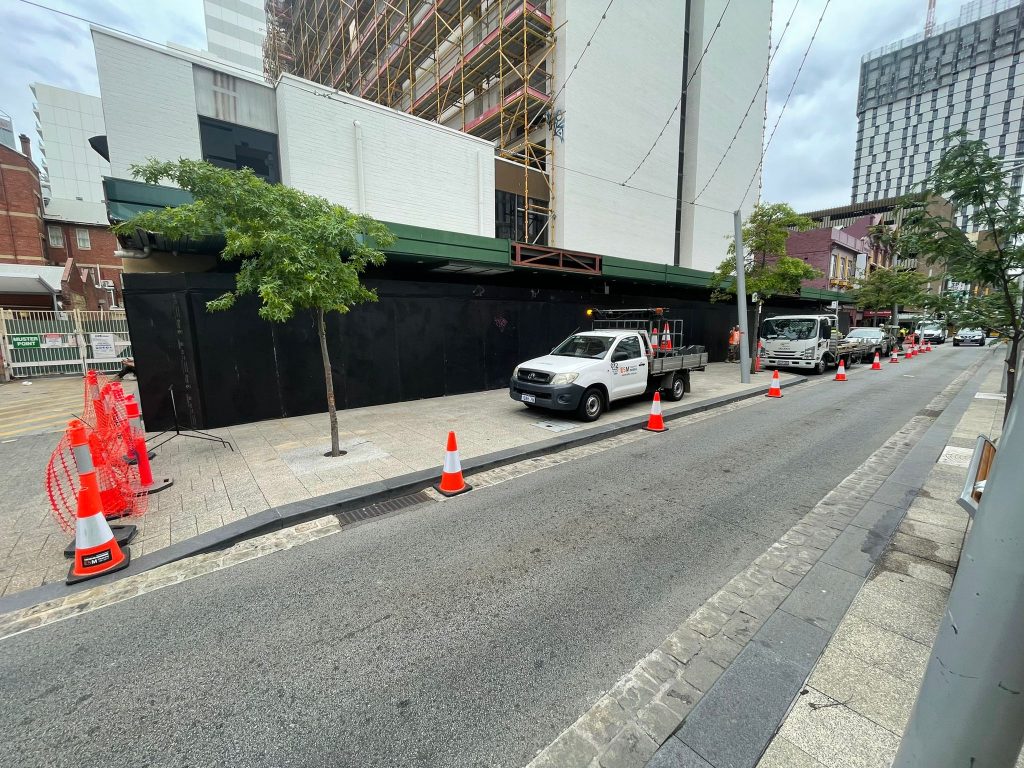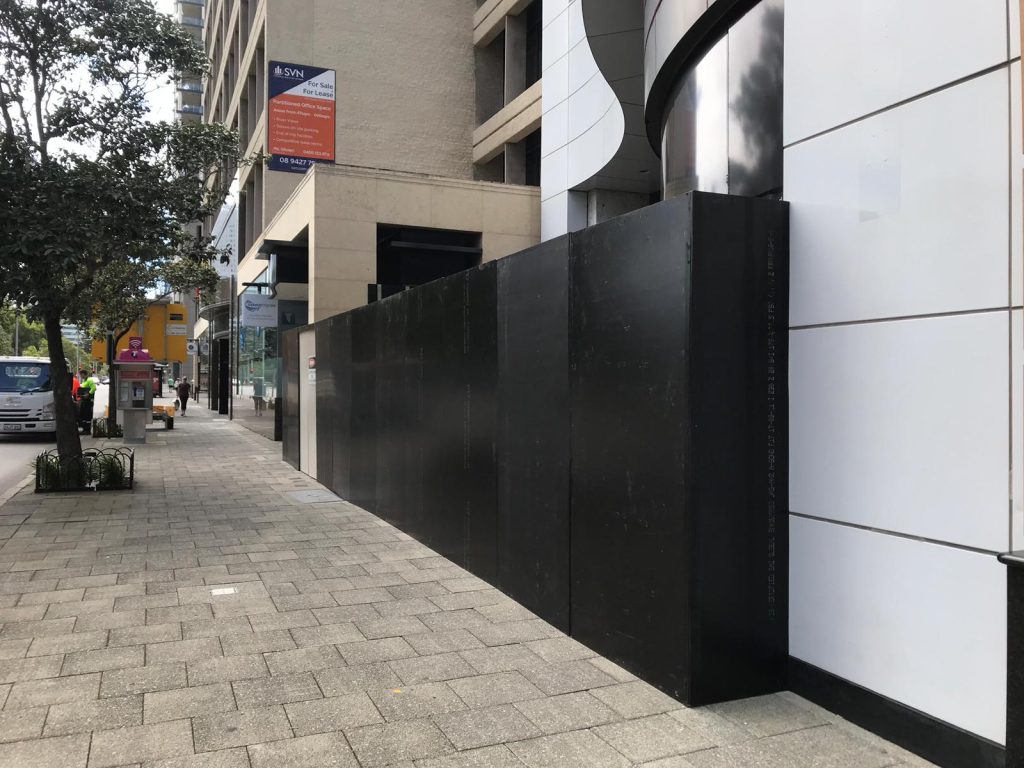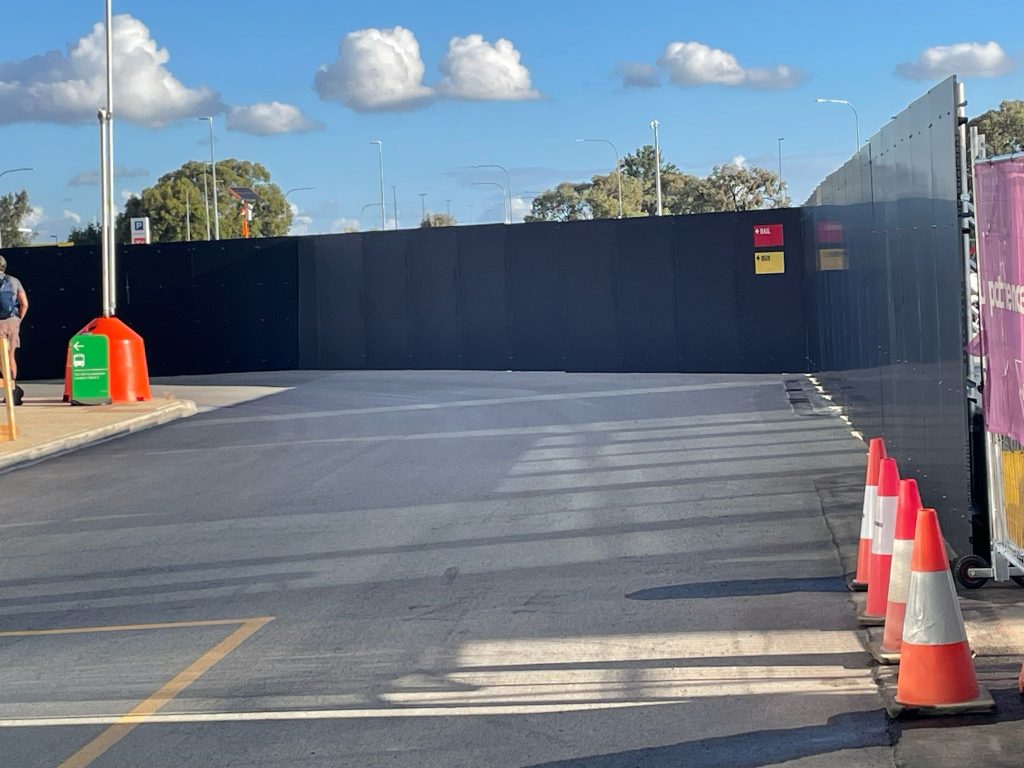
Are your hoardings actually secure—or are they just giving the illusion of safety?
When it comes to Australian construction, particularly in growing urban centres like Perth, the question of how to secure hoardings in a construction site isn’t just a technical one—it’s a matter of public safety, legal compliance, and professional responsibility. Hoardings serve as essential barriers that protect pedestrians, control site access, reduce dust and noise, and maintain project privacy. But without proper securing methods, they can quickly become liabilities.
Let’s take a closer look at how to secure hoardings in a construction site, especially in the unique environmental and regulatory conditions of Perth, WA.
Why Securing Hoardings Matters in Australia
In 2021, a construction site in Sydney made headlines after unsecured hoarding panels collapsed during a weekend storm, injuring a pedestrian and causing significant property damage. Closer to home, Perth’s coastal winds, often reaching speeds above 90 km/h, make hoarding stability a critical consideration.
This highlights the importance of understanding how to secure hoardings in a construction site, not just for compliance with standards like AS 4687:2007 (Australian Standard for Temporary Fencing and Hoardings), but to genuinely protect the public and on-site workers.
Key Techniques for Securing Hoardings on Construction Sites
When learning how to secure hoardings in a construction site, builders in Perth should consider the following tried-and-true methods:
1. Anchoring vs Ballasting
A solid understanding of site conditions is essential. If soil penetration is allowed, anchored hoardings are preferred. These are fixed into the ground using steel posts and concrete footings—ideal for long-term projects or high-traffic urban zones.
However, where anchoring is not possible (for example, over utilities or concrete slabs), ballasted hoardings are the solution. Using heavy blocks or water-filled tanks, they keep hoardings upright against wind and accidental bumps.
Think of it like trying to pitch a tent—you wouldn’t rely on the fabric alone. You’d use pegs and weights to keep it grounded. The same principle applies when considering how to secure hoardings in a construction site.
2. Structural Bracing
Even well-anchored hoardings can fail without adequate bracing. Most hoardings over 2.4 metres high must be supported with T-bracing or diagonal braces to resist lateral wind loads. In Perth, where weather can be unpredictable, engineers often recommend reinforced steel bracing for added resilience.
3. Wind Load Assessment
One of the most overlooked steps in how to secure hoardings in a construction site is calculating wind load. This depends on hoarding height, location, and exposure. In coastal suburbs like Fremantle or Cottesloe, wind conditions are especially demanding.
Consulting a structural engineer ensures the hoarding system is rated for site-specific conditions—preventing potential collapse and costly downtime.
Understanding Regulations in Western Australia
Local councils across Perth enforce stringent guidelines on construction site safety. Hoardings must be installed and maintained in accordance with the Building Act 2011 (WA) and relevant WorkSafe standards. Builders and developers are legally obligated to demonstrate that they understand how to secure hoardings in a construction site with respect to both public liability and worker safety.
Failure to comply can result in hefty fines, project delays, or even license suspension.
Common Mistakes to Avoid
Even experienced teams sometimes cut corners. Here are a few missteps you’ll want to steer clear of when thinking about how to secure hoardings in a construction site:
- Over-reliance on lightweight materials without proper support
- Inadequate inspections after storms or high winds
- Improper installation of ballasts, leading to instability
- Failure to adjust hoardings for site elevation or wind tunnel effects between buildings
Smart Hoardings: The Future of Site Security in Perth
Some high-end projects in Perth’s CBD are now adopting sensor-based hoarding systems, which detect structural shifts and send alerts in real-time. These systems offer a modern approach to how to secure hoardings in a construction site, particularly for long-term developments or high-traffic areas.
As Perth continues to grow—especially with infrastructure projects tied to METRONET and urban renewal plans—expect to see more innovation in hoarding design and safety monitoring.
Practical Checklist for Perth Site Managers
If you’re managing a site and need a straightforward guide on how to secure hoardings in a construction site, start here:
- ✅ Conduct a wind load assessment specific to your Perth site.
- ✅ Choose anchored or ballasted hoardings based on ground conditions.
- ✅ Use engineered bracing systems for panels above 2.4 metres.
- ✅ Inspect hoardings after storms, and log maintenance records.
- ✅ Stay current with WA building codes and safety standards.
Final Thoughts
Understanding how to secure hoardings in a construction site is more than a box-ticking exercise—it’s about upholding best practices that keep people safe and projects on schedule. For Perth builders and developers, getting this right means avoiding legal issues, maintaining public trust, and protecting your investment.
As construction methods evolve and smart technologies gain traction, the basics still apply: solid foundations, strong support, and ongoing diligence. Because in the end, a secure site is a successful site.








